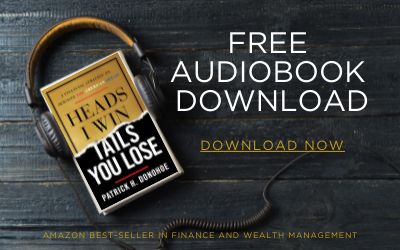There may come a point in your financial journey when you consider cashing out a whole life insurance policy. Whether you need quick access to capital, are reevaluating your long-term financial goals, or are unsure how your policy fits into your current life stage, it’s a decision that deserves careful thought. We view whole life insurance as a powerful financial asset, not just a policy.
When designed and used strategically, it offers guaranteed growth, liquidity, and tax advantages that support both short-term needs and long-term wealth building. But when circumstances change, understanding your options, especially when it comes to cashing out a whole life insurance policy, can help you make the most informed choice possible.
Understanding the Cash Value in Your Whole Life Policy

Before you consider surrendering or withdrawing from your policy, it’s essential to understand what makes whole life insurance unique.
Whole life insurance is a form of cash-value life insurance. This means that as you pay your premiums, a portion of that money goes into a cash value account. Over time, this account grows—tax-deferred—through a combination of guaranteed interest and insurance policy dividends (if issued by a mutual insurance company).
The result? A financial asset that becomes more valuable the longer you keep it.
Whether you’re considering accessing your cash value through a loan, withdrawing funds, or cashing out a whole life insurance policy, it’s important to evaluate the potential impacts on your long-term goals.
This cash value can be:
Unlike term insurance, which expires after a set number of years and offers no liquidity, whole life insurance creates an opportunity to treat your policy as a living, liquid asset, one that supports your evolving financial goals.
Think of your policy as a private reserve of capital. It’s available to you in times of need, during opportunities, or as a tool to support The Perpetual Wealth Strategy, all while continuing to protect your loved ones.
What Does It Mean to “Cash Out” a Whole Life Insurance Policy?

When people say they want to cash out a whole life insurance policy, they’re often referring to different actions—each with its own impact on the policy and their long-term strategy.
1. Surrendering the Policy
This is the most direct method of cashing out a whole life insurance policy. When you fully surrender your policy, you cancel the coverage and receive the accumulated cash surrender value. This amount may be reduced by:
- Surrender charges (especially in early years)
- Any outstanding policy loans or interest
- Taxes on gains if the cash value exceeds your basis (total premiums paid)
Surrendering should be approached with caution, as it ends both the death benefit protection and the long-term compounding of your cash value life insurance.
2. Cash Value Withdrawal
This option allows you to take a partial withdrawal from the cash value. Unlike a loan, you’re permanently removing funds from the policy. This may:
- Lower the death benefit
- Impact future dividend performance
- Be subject to taxes if you withdraw more than your cost basis
Whether you’re considering a withdrawal or cashing out a whole life insurance policy entirely, it’s important to weigh the potential effects on your long-term financial goals. It’s more flexible than surrendering but still affects your policy’s long-term potential.
3. Taking a Policy Loan
A life insurance policy loan is one of the most strategic features of whole life insurance. You can borrow against the cash value and repay it on your own terms—without penalties or credit checks.
- The policy continues to grow as if the loan weren’t taken
- Interest is charged, but you’re borrowing from the insurance company, not withdrawing your own money
- If unpaid, the loan is subtracted from the death benefit
This option allows you to tap into liquidity without giving up your coverage or interrupting compounding growth, making it a key component of The Perpetual Wealth Strategy. For some, a loan can be a temporary alternative to cashing out a whole life insurance policy, while still retaining the benefits of the policy.
Know the Difference
Cashing out a whole life insurance policy doesn’t have to mean giving it up entirely. Knowing whether to withdraw, borrow, or surrender depends on your goals. Strategically designed policies, like high cash value, low death benefit whole life insurance policies, give you more flexibility earlier in the life of the contract, allowing for liquidity while keeping your options open.
Alternatives to Fully Cashing Out Your Policy

If you’re considering cashing out a whole life insurance policy, it’s worth pausing to ask: Do I really need to cancel the policy—or am I just looking for access to the value inside it?
The good news is that whole life insurance offers flexible alternatives that allow you to access cash without giving up the benefits of the policy. Exploring these options can help you avoid cashing out a whole life insurance policy entirely while still meeting your short-term financial needs.
1. Policy Loans
A life insurance policy loan allows you to borrow against the policy’s cash value, using it as collateral. This is one of the most powerful features of cash value life insurance:
- No credit checks or loan applications
- No taxes on the borrowed amount
- Flexible repayment schedule (or none at all)
- Cash value continues to earn interest and dividends, even while the loan is active
This strategy is central to how we help clients at Paradigm Life use their policies as a private banking system—keeping their money in motion while still growing their wealth. For some, this can be an alternative to cashing out a whole life insurance policy, allowing them to access liquidity without ending their coverage.
2. Partial Cash Value Withdrawals
If you don’t want to borrow, you may choose to withdraw a portion of your cash value. This option gives you permanent access to a portion of your funds but may reduce the death benefit and limit future policy growth.
While it’s more final than a loan, it may be suitable if you need a one-time payout and don’t plan to repay the amount. In some cases, clients consider partial withdrawals as part of their strategy before fully cashing out a whole life insurance policy.
3. Using Dividends to Cover Premiums
If your policy is from a mutual insurance company, it may earn dividends. You can use these to:
- Reduce or cover your premium payments
- Purchase additional paid-up insurance
- Accumulate interest inside the policy
- Offset loan interest
This allows you to preserve the policy while reducing your out-of-pocket commitment, making it easier to keep long-term benefits in place. It’s an option that can help you avoid cashing out a whole life insurance policy and still maintain its compounding growth potential.
Design Matters
Strategically structured policies, such as high cash value, low death benefit whole life insurance policies, are built to give you more access early on. These designs allow you to meet current needs while keeping the policy active as a long-term financial tool.
Real-Life Scenario: Using Cash Value Without Surrendering

To better understand how cashing out a whole life insurance policy doesn’t have to mean giving it up, let’s look at a real-world example of how a policyholder used their cash value strategically—without surrendering the policy.
After several years of funding a high cash value whole life policy, a policyholder accumulates $85,000 in available cash value. When a business opportunity presents itself, they need quick access to capital. Rather than liquidating investments or tapping into retirement funds, they choose to take a policy loan for $40,000.
Here’s how it plays out:
- The funds are accessed quickly and tax-free, without credit checks or loan applications.
- The full $85,000 continues to earn dividends and interest, as if no money was borrowed.
- The loan is repaid on their own schedule, using profits from the investment opportunity.
This strategy highlights an alternative to cashing out a whole life insurance policy completely, as the policyholder maintains its long-term benefits while addressing short-term needs.
The Result
The policyholder keeps the death benefit, avoids surrendering the policy, and maintains the long-term growth of their cash value life insurance. Instead of cashing out a whole life insurance policy, they’ve leveraged it as a living asset—a flexible financial resource that supports opportunity without sacrificing protection.
This scenario illustrates how whole life insurance, when used strategically, can act as a source of liquidity and leverage, not just a safety net for the future.
FAQs
Can you cash out a whole life insurance policy?
Yes, you can. You may access your policy’s cash value through a full surrender, partial withdrawal, or a policy loan. However, each option has different consequences. A full surrender cancels the policy and may trigger taxes on any gain, while a loan or withdrawal lets you access funds without giving up the death benefit entirely. If you’re considering cashing out a whole life insurance policy, we at Paradigm Life often recommend reviewing your broader strategy before making this decision.
- Surrender: Cancels the policy; cash value paid minus fees or taxes
- Withdrawal: Reduces death benefit; may be taxable if gains exceed basis
- Policy loan: No taxes or credit check; retains policy structure and growth
Strategic Tip: Consider loans first to maintain long-term benefits
How to cash in whole life insurance policy when on Medicaid?
If you’re on Medicaid or applying for it, the cash value of your life insurance policy may count as a countable asset. In some cases, surrendering, borrowing against, or cashing out a whole life insurance policy could impact your eligibility. It’s crucial to work with a financial advisor who understands both Medicaid rules and insurance planning to avoid unintended consequences.
- Asset Limits: Medicaid has strict asset limits that vary by state
- Cash value: Often countable unless below a small exemption (e.g., <$1,500)
- Surrender/loan: May need to report and spend down to qualify
Strategy Tip: Consult with an elder law or Medicaid planning specialist
Who gets the cash value in a whole life insurance policy?
While you’re alive, you—the policy owner—control and can access the cash value. If you pass away, your beneficiaries receive the death benefit, but typically not the remaining cash value unless the policy is specifically structured to include it. That’s why strategic design is key.
- Policy owner rights: You own and control the cash value
- Death benefit payout: Paid to named beneficiaries
- Remaining cash value: Reabsorbed by insurer unless included via rider
Planning Tip: Ask about increasing death benefit or return-of-premium features
When can you cash out a whole life insurance policy?
You can begin accessing the cash value once it has accumulated, typically after the first few policy years. Many policies are designed to build higher early cash value (e.g., Wealth Maximization Accounts) so you can access funds sooner without waiting decades.
- Early years: May include surrender fees or low liquidity
- High cash value designs: Allow earlier access (often year 1–3)
- Maturity value: Policy continues to grow over time
Tip: Look for paid-up additions (PUAs) to accelerate growth
Should I keep my whole life insurance policy or exchange the cash value?
It depends on your current financial goals. If your policy is no longer aligned with your needs, cashing out a whole life insurance policy or a 1035 exchange into another permanent policy or annuity might be an option.
However, keeping the policy could preserve benefits like tax-deferred growth, guaranteed coverage, and legacy planning. Before cashing out a whole life insurance policy, it’s crucial to fully evaluate how this decision fits into your overall strategy. A Wealth Strategist can help you weigh the long-term pros and cons.
- Keep the policy if: You want continued growth, tax benefits, and protection
- Exchange if: You need more flexibility or better policy structure
- 1035 exchange: Lets you roll into another policy tax-free
Strategy Tip: Don’t cancel before understanding all your options
What increases the cash value on a whole life insurance policy?
Cash value increases through premium payments, guaranteed interest from the insurance company, and—if it’s a participating policy—non-guaranteed dividends. The longer the policy is active and properly funded, the more efficiently it grows.
- Premiums: Fund both protection and cash accumulation
- Dividends: Can be used to buy paid-up additions (PUAs) for faster growth
- Time: Compounding becomes more powerful over time
Tip: Maximize growth by minimizing unnecessary withdrawals or loans
Why would a whole life insurance policy cash value decrease?
Though typically designed to grow steadily, cash value can decrease due to unpaid policy loans, loan interest accumulation, withdrawals exceeding the premium basis, or under performance in dividend payments. Regular policy reviews and strategic use help prevent these issues.
Tip: Schedule annual reviews to stay on track and adjust strategy
Loan interest: Unpaid balances compound over time
Withdrawals: Reduce cash value and future earnings
Dividends: Not guaranteed; lower rates can affect growth
Consider Strategy Before You Surrender
We teach clients to view whole life insurance not as an expense, but as a Tier-One Asset, a foundational part of a bigger strategy. Through the Perpetual Wealth Strategy, your policy supports three pillars of financial success: Cash Flow, Protection, and Wealth. Whether through policy loans, dividends, or long-term compounding, a whole life policy can continue to work for you when integrated correctly.
Before you make a final decision about cashing out a whole life insurance policy, take time to evaluate the alternatives. There may be smarter, more strategic ways to access what you need—without walking away from everything you’ve built.
If you’re thinking about cashing out a whole life insurance policy, a quick conversation with a Paradigm Life Wealth Strategist could help you explore options that protect your long-term goals while meeting your short-term needs. Schedule a FREE consultation with a Wealth Strategist today.







